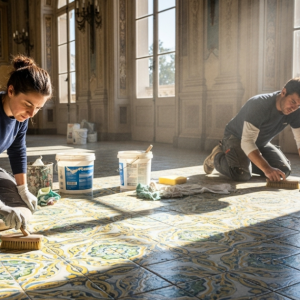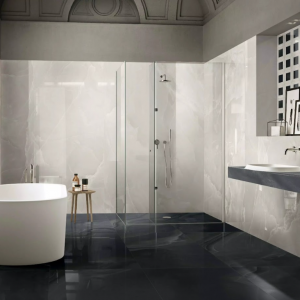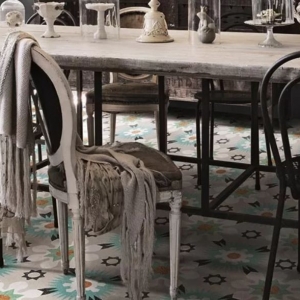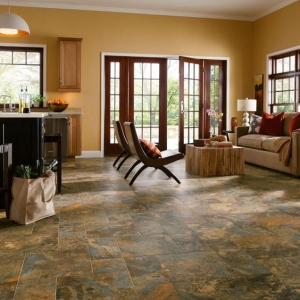Wandering through a tile shop, you’re faced with a dazzling array of ceramic and porcelain Italian tiles. Both are clay-based, both can be gorgeous, but they’re built for different roles. Italian tiles are prized for their craftsmanship and beauty, so choosing the right material is key to a successful project. Here’s a straightforward breakdown to help you decide.
The Material Breakdown
Ceramic and porcelain tiles both start with clay, but porcelain’s is finer, denser, and fired at higher temperatures. This makes it stronger, less porous, and ideal for demanding environments.
Ceramic tiles are softer and more absorbent, which makes them easier to cut and install. They work well for indoor walls or floors with light foot traffic.
For Italian tiles in a high-moisture spot like a kitchen or an outdoor area, porcelain’s durability is a clear winner. For a decorative wall or a quiet room, ceramic can be perfect.
Design Choices
A quality tile shop stocked with Italian tiles offers endless styles—think marble, wood, bold patterns, or sleek textures. Porcelain often features sharper, more precise finishes, especially with rectified tiles that have clean edges for tight grout lines.
Ceramic is the go-to for artistic, hand-painted designs or intricate patterns, ideal for eye-catching backsplashes or feature walls. It’s less suited for high-traffic or wet spaces.
For a modern, seamless look, porcelain’s your pick. For a creative, custom vibe, ceramic shines.
Long-Term Performance
Porcelain is the tougher option, resisting water, stains, and heavy wear. It’s great for busy kitchens, patios, or commercial spaces.
Ceramic holds up in low-impact areas but can chip or absorb moisture more easily, making it better for gentler settings like a bedroom or bathroom wall.
Italian tiles, whether ceramic or porcelain, are crafted for durability. Choosing the right one depends on your space’s needs.
Cost and Installation
Porcelain often comes with a higher price due to its density and the specialized tools needed for cutting, which can also increase installation costs.
Ceramic is lighter and easier to work with, making it a budget-friendly choice for DIY projects or smaller installations like walls.
Your tile shop can break down the costs and help you find the best balance of price and performance.
Everyday Upkeep
Both Italian tiles are easy to maintain—sweep or mop, and you’re set. Porcelain’s low porosity makes it more stain-resistant, perfect for spill-prone areas like bathrooms.
Ceramic needs a bit more care with grout lines in wet spaces and is more prone to chipping if something heavy drops.
Which One Fits?
Think about your project: Where will the tiles go? How much wear will they take? Are you prioritizing looks or longevity?
A trusted tile shop with Italian tiles can offer guidance. If they have samples, take them home to see what works best.
Ceramic and porcelain both deliver stunning results, but only one’s right for your space. Choose smart, and your tiles will look great for years.











